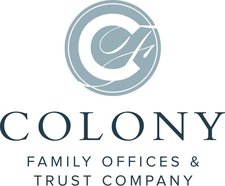I have two children. Should I open one 529 account for both children or a separate account for each child?

That depends on your personal preferences. From a paperwork and account fee standpoint, opening one account might make sense. However, after factoring in other considerations, opening two accounts is probably preferable.
The main advantages of opening a separate 529 account for each child are that you avoid commingling funds, you can contribute different amounts for each child as needed, and you can tailor your investment portfolios to each child's specific age. In addition, by opening two accounts, you maximize the annual gift tax exclusion because you can contribute $19,000 (in 2025) to each account for each child per year gift-tax free ($38,000 for joint gifts by both parents) instead of contributing this amount to just one account. And, if you plan to take advantage of the special lump-sum gifting rules unique to 529 plans, you can gift up to $95,000 to each account for each child once every five years ($190,000 for joint gifts).
If you decide to open one account, keep in mind that a 529 account can have only one beneficiary. You can change the beneficiary as needed — for example, after your first child finishes college, you can change the beneficiary to your second child — but check the plan for any limitations on the frequency of changes.
Also, with one account, you'll have to think carefully about the investment options you choose. If you invest too aggressively, the likelihood of market volatility is higher, which means you might incur losses when your child is close to college age. But if you invest too conservatively, your investment returns may not keep pace with college inflation for your younger child. This is why opening two separate accounts often makes sense.
Note: Before investing in a 529 plan, please consider the investment objectives, risks, charges, and expenses carefully. The official disclosure statements and applicable prospectuses, which contain this and other information about the investment options, underlying investments, and investment company, can be obtained by contacting your financial professional. You should read these materials carefully before investing. As with other investments, there are generally fees and expenses associated with participation in a 529 plan. There is also the risk that the investments may lose money or not perform well enough to cover college costs as anticipated. Investment earnings accumulate on a tax-deferred basis, and withdrawals are tax-free as long as they are used for qualified education expenses. For withdrawals not used for qualified education expenses, earnings may be subject to taxation as ordinary income and possibly a 10% federal income tax penalty. The tax implications of a 529 plan should be discussed with your legal and/or tax professionals because they can vary significantly from state to state. Also be aware that most states offer their own 529 plans, which may provide advantages and benefits exclusively for their residents and taxpayers. These other state benefits may include financial aid, scholarship funds, and protection from creditors.


